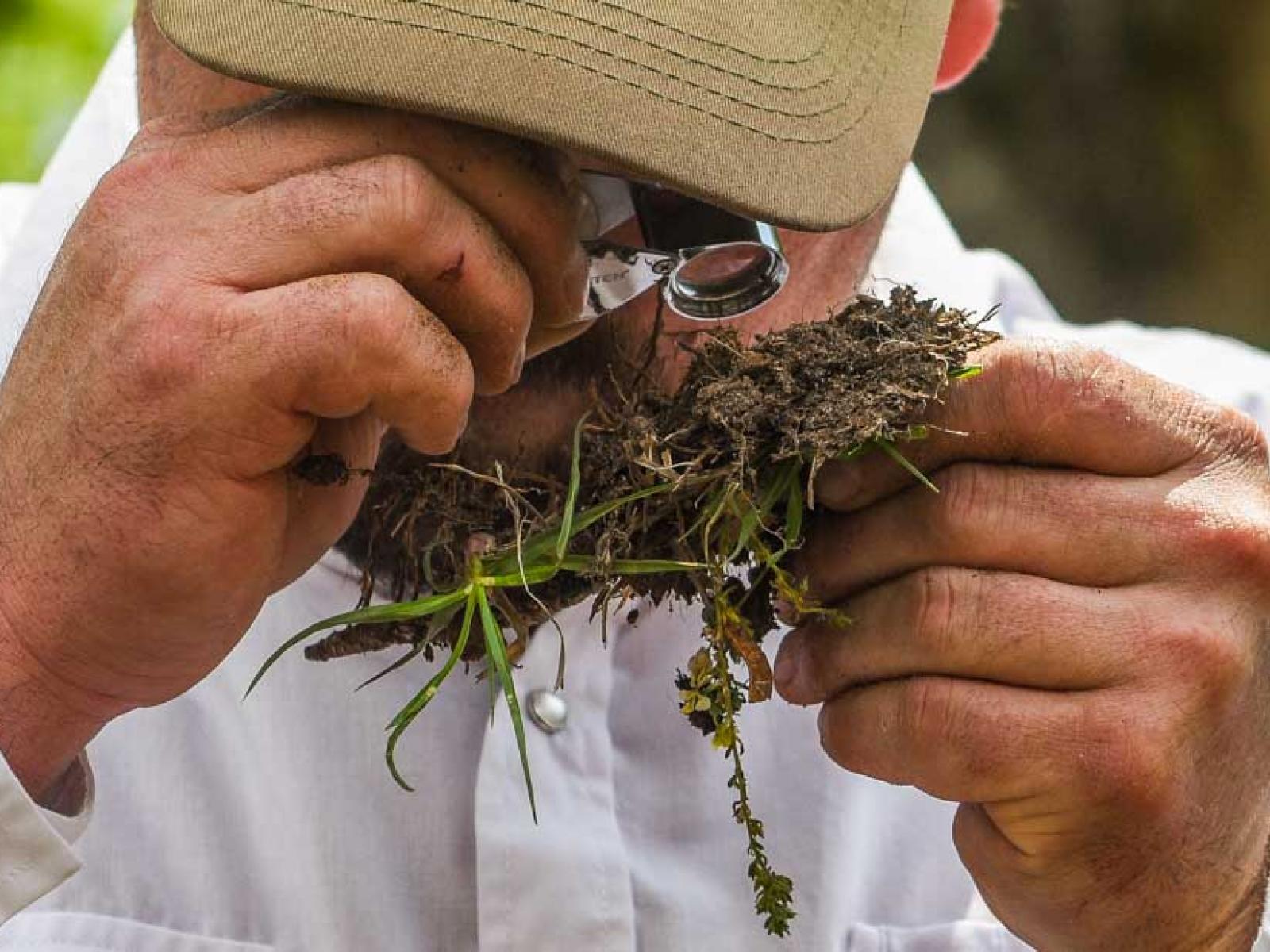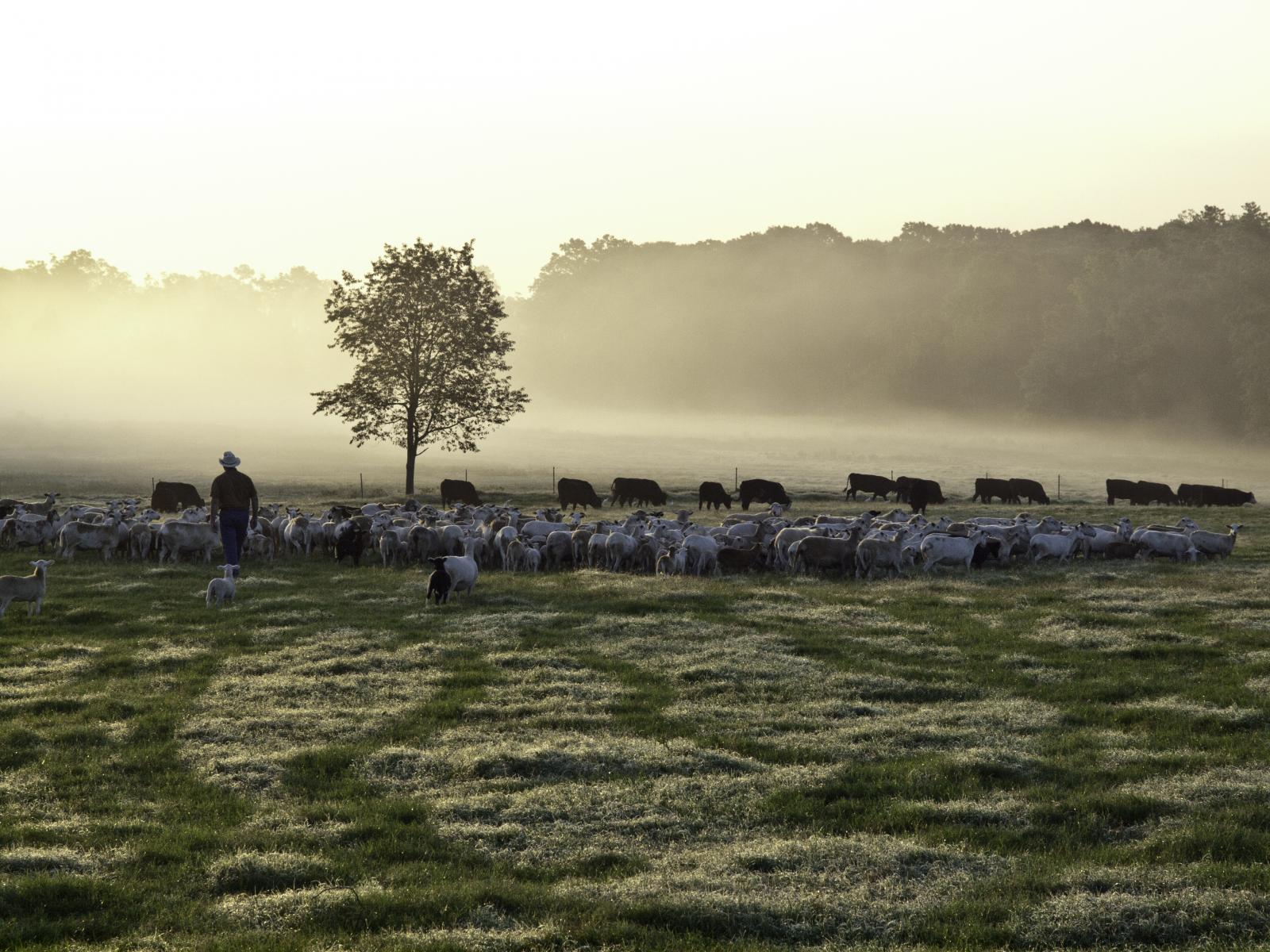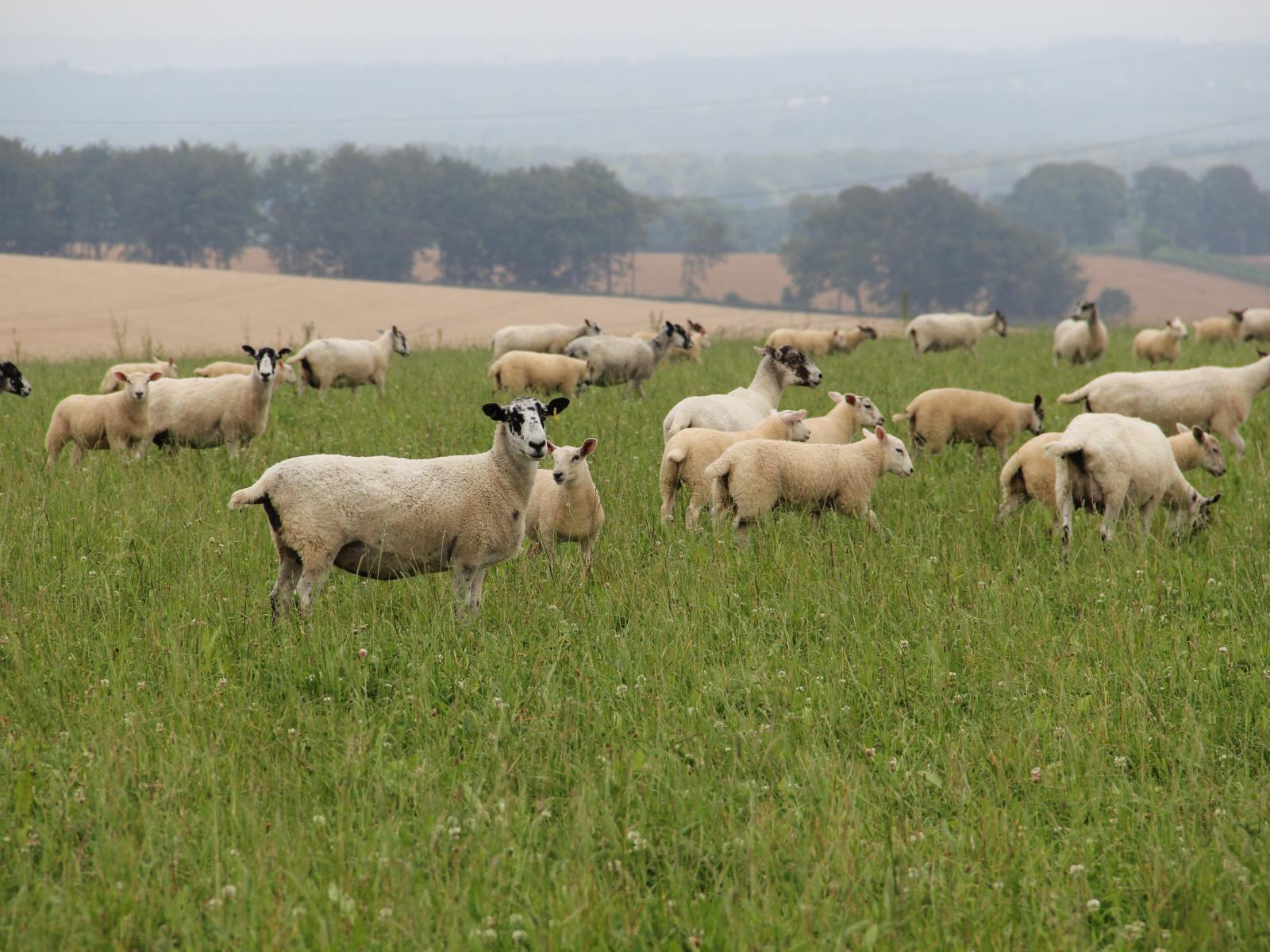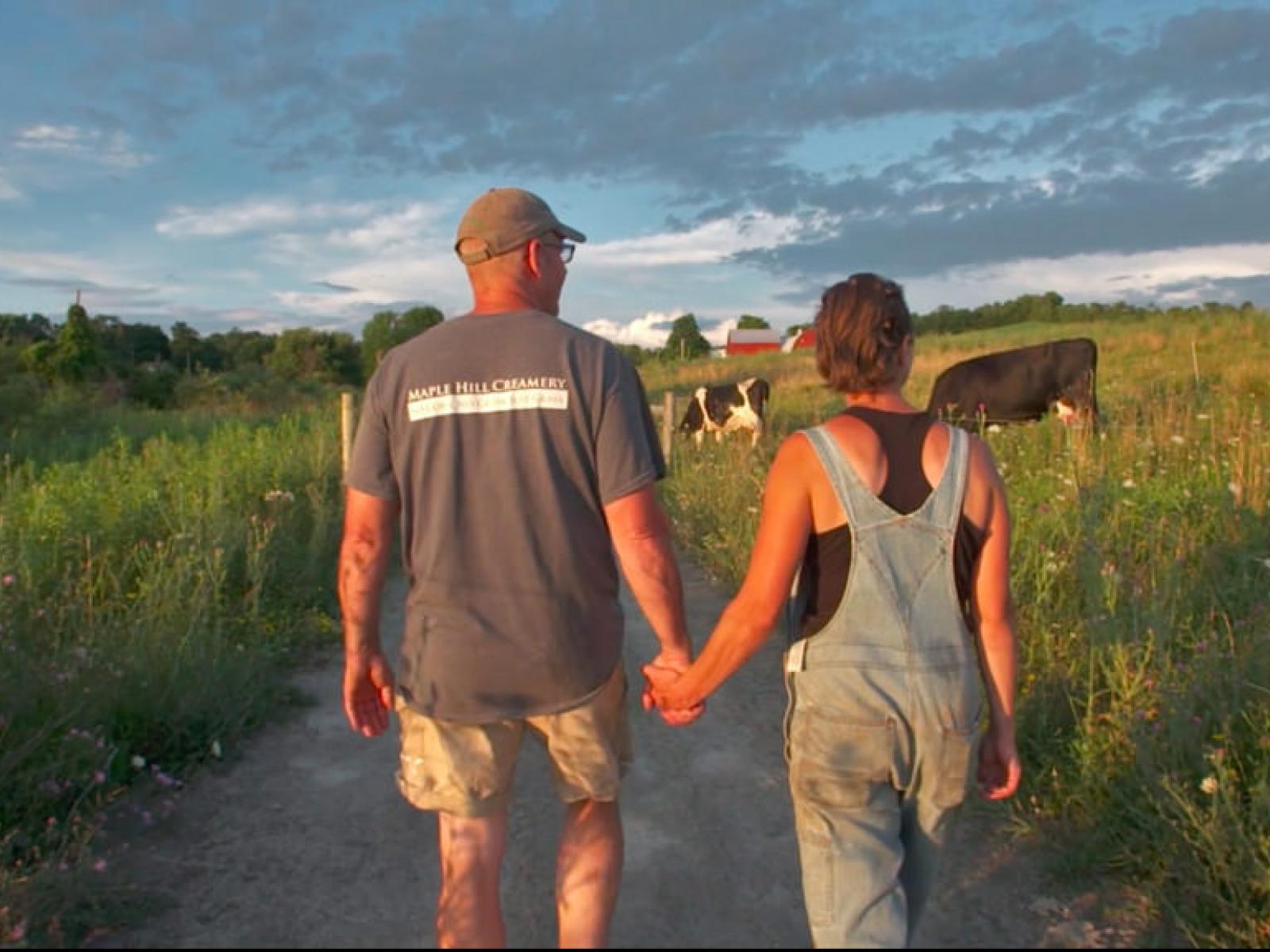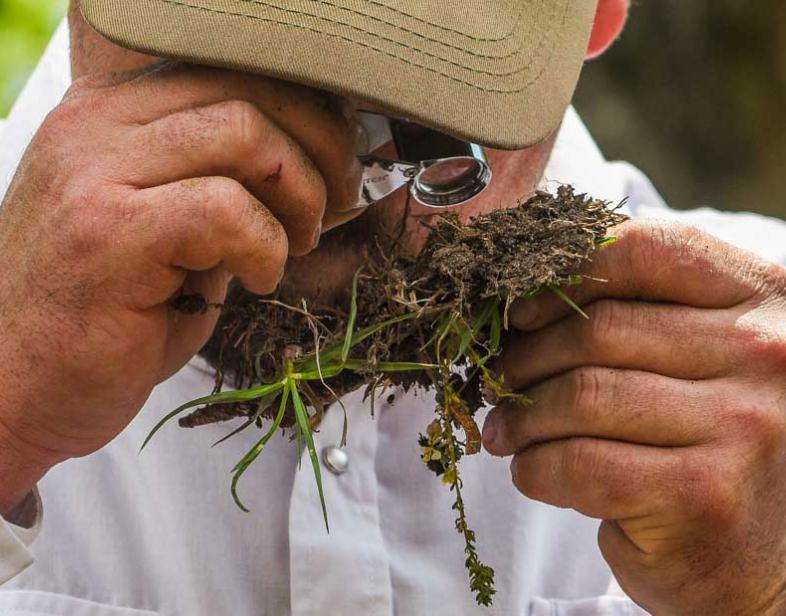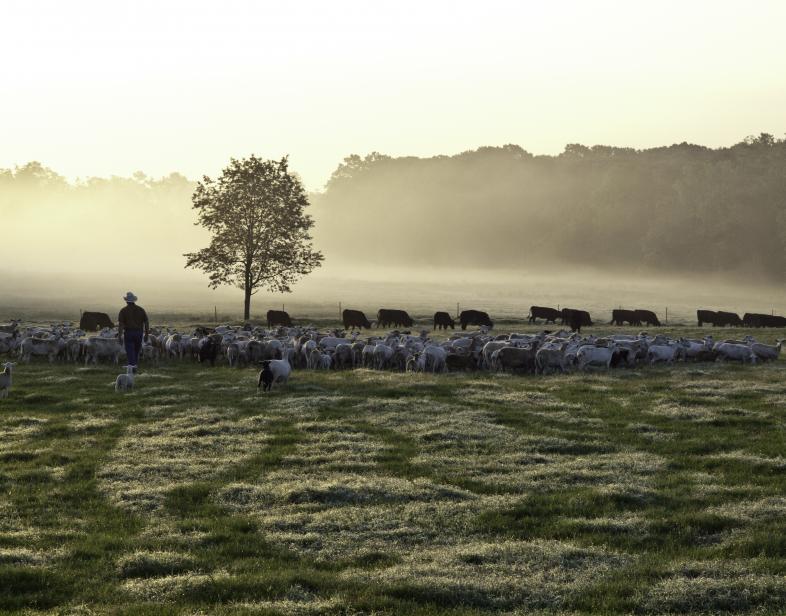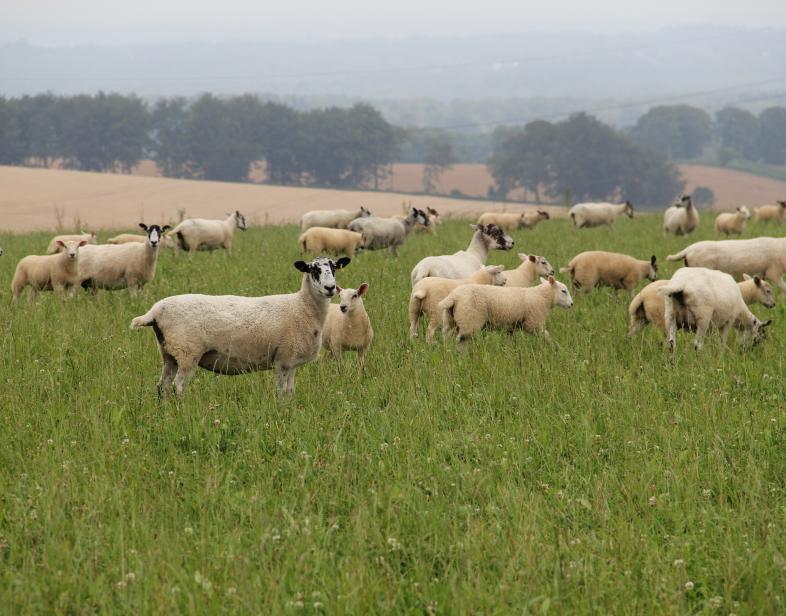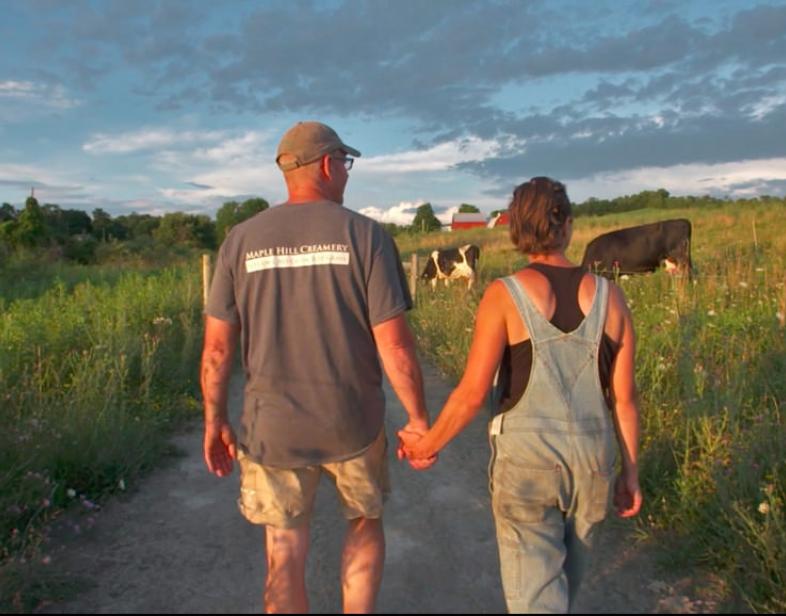An Overview Of Our Solution
Our current agricultural system encourages cheap production with externalized environmental costs, leading to purchasing behavior that perpetuates a vicious cycle of land degradation. An alternate production model exists based on regenerative agricultural practices that can restore ecosystem function and sequester carbon back into the soil, all the while producing healthy food and ethical fiber that benefits all involved. This future is possible with marketplace differentiation for regenerative products, consumer education, and proper coordination of supply chain logistics between farmers and brands.
Land-to-Market, developed in partnership with a global network of regenerative land managers and philosophically-aligned brands, aims to launch this regenerative sourcing solution and transform agriculture from land-degrading to ecosystem-regenerating.
- Population Impacted: 65 farmers have been enrolled in the pilot so far
- Continent: North America
Context Analysis
There are proven methods for regenerating grasslands and achieving significantly higher soil carbon accruals than conventional grazing. Yet, human nature is slow to change as markets are not designed to reward those that avoid negative ecological externalities. Those that do seek new methods lack secure markets and are faced with funding, policy, and supply chain barriers that favor the efficiencies of industrialized practice. Brand behavior falls in line with the industrial production model out of convenience and perceived necessity. Those wanting to offer regenerative products are hampered by poor transparency and traceability in supply chains. Consumers are also pushed toward this model due to the cost and abundance of conventionally produced goods. There is an increasing demand for regenerative products, but they are currently undifferentiated from their conventional counterparts. For the conscious consumer, it is difficult to evaluate whether a product is aligned with values.
Describe the technical solution you wanted the target audience to adopt
By bringing verified regenerative food and fiber into supply chains and differentiating them on the shelf, we are empowering more brands to adopt regenerative agricultural sourcing and consumers to make more informed purchasing choices. For both brands and consumers, the technical solution involves changing purchasing behavior to be driven by a concern for true ecological impact. Understanding the ecological outcomes of their choices will allow the power of their purchasing to support healthier lands and healthier communities.
L2M is also designed to stimulate behavioral changes in farmers and ranchers so as to increase adoption of regenerative grazing practices that can sequester significant amounts of carbon. By demonstrating the market demand for verified regenerative products and providing supply chains solutions to link producers and brands, producers will be incentivized to adopt new grazing practices so as to receive market differentiation.
Type of intervention
Describe your behavioral intervention
Savory Institute has been approached by many brands who lack access to reliable supplies of regenerative raw materials due to complex, multi-layer supply chains. L2M supports adoption of new behaviors by brands interested in offering regenerative food and fiber products by directly linking them to regenerative producers.
By differentiating regenerative products and educating consumers on the importance of regenerative agricultural practices, L2M supports consumers adopting new behaviors that align with their values. Currently, regenerative products are sold in commodity markets undifferentiated from their conventionally-produced counterparts. Labels such as organic, grass-fed, and non-GMO are a positive step, but these practice-based differentiators do not provide a true valuation of the ecological impacts of their production.
To further influence consumer purchasing behavior, L2M uses media to illustrate the improved social, economic, and ecological outcomes of regenerative agriculture, creating conscientious consumers that use the power of their purchase to make a difference in the future of the planet.
Savory’s Global Network of regionally-based learning Hubs and their producer networks allow L2M to be scaled to sufficient size for market adoption. To support producers adopting regenerating practices, Hubs offer training and ongoing support that helps producers successfully plan for and implement a regenerative grazing approach.
As needed, please explain the type of intervention in more detail
No additional description needed. See above.
Describe your implementation
To develop a solution that addresses key underlying market-based barriers and leads to uptake across an array of markets, Savory Institute partnered with established producer networks, industry groups, researchers, and market partners to co-design L2M. Three key components were identified:
1) To maintain integrity of regenerative claims, they should be backed by data verifying ecosystem improvements and soil carbon sequestration rates. Savory has partnered with researchers, Hubs, and NGO’s to develop the Ecological Outcomes Verification (EOV) protocol, providing metrics on ecological health indicators both for the short-term to guide management decisions and long-term to quantify slower processes like soil carbon.
2) Brands need supply chains that provide easy access and steady supply of regenerative materials. With producers and brands, a digital platform for housing EOV monitoring data was developed. When data trends upwards, producers are entered onto a supplier roster that links verified producers with aligned market partners.
3) Consumers need the ability to differentiate regenerative products from those that are conventionally-produced and understand the ecological outcomes of their choices. A consumer-facing seal has been designed to identify a product as regenerative, and additionally a suite of marketing materials is being created with coordinated messaging to be used by Savory Institute, Hubs, brands, and market partners to create consumer recognition for the seal while using emotional appeals that encourage food and fiber purchasing that aligns with their values.
The greatest challenge so far has been setting up 14 Hubs in EOV monitoring, which uncovered the need to update the EOV training curriculum based on learnings from applying EOV to various geographical contexts. These lessons have been invaluable in ensuring the protocol is scientifically rigorous, scalable, and affordable enough to be well-received by the livestock industry.
External connections
To co-design and implement L2M, Savory Institute is working with philosophically-aligned partners from the protein, dairy, wool, and leather industries (EPIC Provisions, Applegate, Kering Group, Zuke’s Natural Pet Foods, Teton Waters Ranch, Union Snacks, and other smaller/regional brands), producer networks (American Grassfed Association, Grasslands LLC), industry groups (Textile Exchange, Fair Fashion Center), consumer education groups (Kiss the Ground), and the Savory Global Network of Hubs.
Our EOV monitoring protocol was developed and refined over three years in collaboration with Michigan State University, Ovis XXI, Texas A&M, The Nature Conservancy, and local USDA-NRCS agents (among others).
The Hubs implementing L2M are locally owned and operated learning centers that provide training, resources, and implementation support to local farmers and ranchers. Hubs engage regional partners (e.g. colleges, agencies, and livestock groups) to identify needs and support local producers. Additionally, Hubs conduct ecological monitoring and verify outcomes on producers’ lands for program enrollment, thus serving in both support and verification roles.
As the program grows through its pilot phase and verified regenerative products enter consumer consciousness, we expect new funding, policies, and supply chain options that favor this demonstrated market. Savory Institute regularly works to remove these barriers for producers practicing Holistic Management.
Who adopted the desired behaviors and to what degree?
Four national brands have committed funding and support for L2M in 2018. Further, 14 of Savory’s 32 Hubs have been set up in EOV monitoring. They anticipate recruiting 32 additional regional market partners in 2018.
These Hubs expect to enroll 136 producers into L2M in 2018. Hub surveys indicate an average farm size of roughly 250 hectares. With 136 producers at 250 hectares each, we predict 34,000 hectares affected in 2018 because of L2M.
We expect the first verified regenerative products on shelves with a consumer-facing mark by the end of 2018. This will occur with unified branding and messaging coordinated among market partners. With demonstrated consumer interest, we expect increased interest from market partners and producers.
Savory Institute’s history would suggest a steady increase in adoption and roll-out of the L2M program. Since establishing the first Savory Hub in 2012, the Global Network has grown to 32 Hubs and has begun regeneration of 9 million hectares.
How did you impact natural resource use and greenhouse gas emissions?
Holistic Management (sometimes known as Adaptive Multi Paddock Grazing) has been shown to restore key biological processes, build soil, and sequester more carbon than conventional grazing. In 2011, Teague found HM exceeded continuous grazing by an annual 3 tons of carbon sequestered per hectare. Machmuller (2015) reports a 7 ton per hectare annual increase in carbon, with a plateauing of the drawdown rate around 6 years. Rowntree (2016) showed an annual sequestration rate of 4 tons of carbon per hectare. Studies also show that soil beneath properly managed livestock can oxidize more methane than livestock release. Stanley (2018) found that holistically managed soils act as a net carbon sink, and Wang (2015) found lands converting to HM are “likely net carbon sinks for decades.” Applying the most conservative drawdown estimates of 3 tons C ha-1 yr-1 for 6 years to the 34,000 ha in 2018 yields:
34,000 ha × (3 tons C)/(ha/yr) = 102 tones × 6 yr = 612,000 tons C drawdown
What were some of the resulting co-benefits?
Farmers don’t just improve ecological outcomes when adopting regenerative practices, they see financial return through both increased forage production and decreased production costs. In a 2017 whitepaper, the Dharma Lea dairy reported that since transitioning to HM in 2015 they have seen a 120% increase in grazing days, 68% increase in grass production, and 12% decrease in feed costs. They have also seen significant declines in markers of poor cattle health, improved milk quality, and lower medical costs.
Improvements in ecological processes such as carbon cycling, water/nutrient cycling, energy flow, and improved forage production and biological diversity (Teague, 2011; Rowntree, 2016; Stanley, 2018) also benefit wildlife and local communities through improved food, water, and ecosystem services (Teague, 2018).
Building healthier ecosystems also contributes to greater ecological and social resilience in the face of climate change.
Sustainability
L2M is designed to be self-sufficient after launch. As markets adopt verified regenerative outcomes, consumer purchasing behavior will attract more brands into the program, with those brands paying for supplier roster access which will go back towards training/verifying outcomes for more producers. As more producers are enrolled, more supply becomes available, further growing the program.
We do not yet have data demonstrating market demand for regenerative products, but based on reception to labels such as “organic” and “grass-fed,” it is safe to expect a steady increase in demand.
Some Hubs have acquired grant funding to accelerate recruitment and producer training, but L2M's overall success is not dependent on these grants.
Return on investment
L2M start-up cost is roughly $370,000: $70,000 to develop the EOV methodology and set-up 14 prototype Hubs; $150,000 to create the digital platform for EOV data and supplier rosters; and $150,000 for market research, assets, and consumer education.
According to an Ecosystem Marketplace report, the 2016 average price per metric ton of CO2e offsets in voluntary markets was roughly $3. At $3 per metric ton, $360,000 would purchase 120,000 metric tons of CO2e offsets.
Based on published carbon sequestration rates (Teague 2018, Rowntree 2016), we can reasonably estimate producers enrolled in 2018 will draw down 102,000 metric tons CO2 in one year, practically reaching break-even numbers in equivalency with CO2e offsets.
How could we successfully replicate this solution elsewhere?
Programs such as “organic” and “grass-fed” share similarities with L2M in that they use international-scale and product differentiation to change brand/consumer behaviors and increase adoption of better production. However, L2M is the first program to differentiate based on outcomes, in contrast to other programs which differentiate purely based on practices.
When proven successful in changing brand and consumer behaviors for regenerative products, L2M could be replicated in other sectors such as croplands or forestry. Since the EOV methodology and scaling framework has already been developed, a cropland or forestry program similar to L2M would be much simpler to implement. Such a program would require similar partnering with market partners, but engaging consumers would be less of a hurdle. The program could build on L2M’s marketing campaigns that raise consumer awareness of the ecological impact of their product choices.

